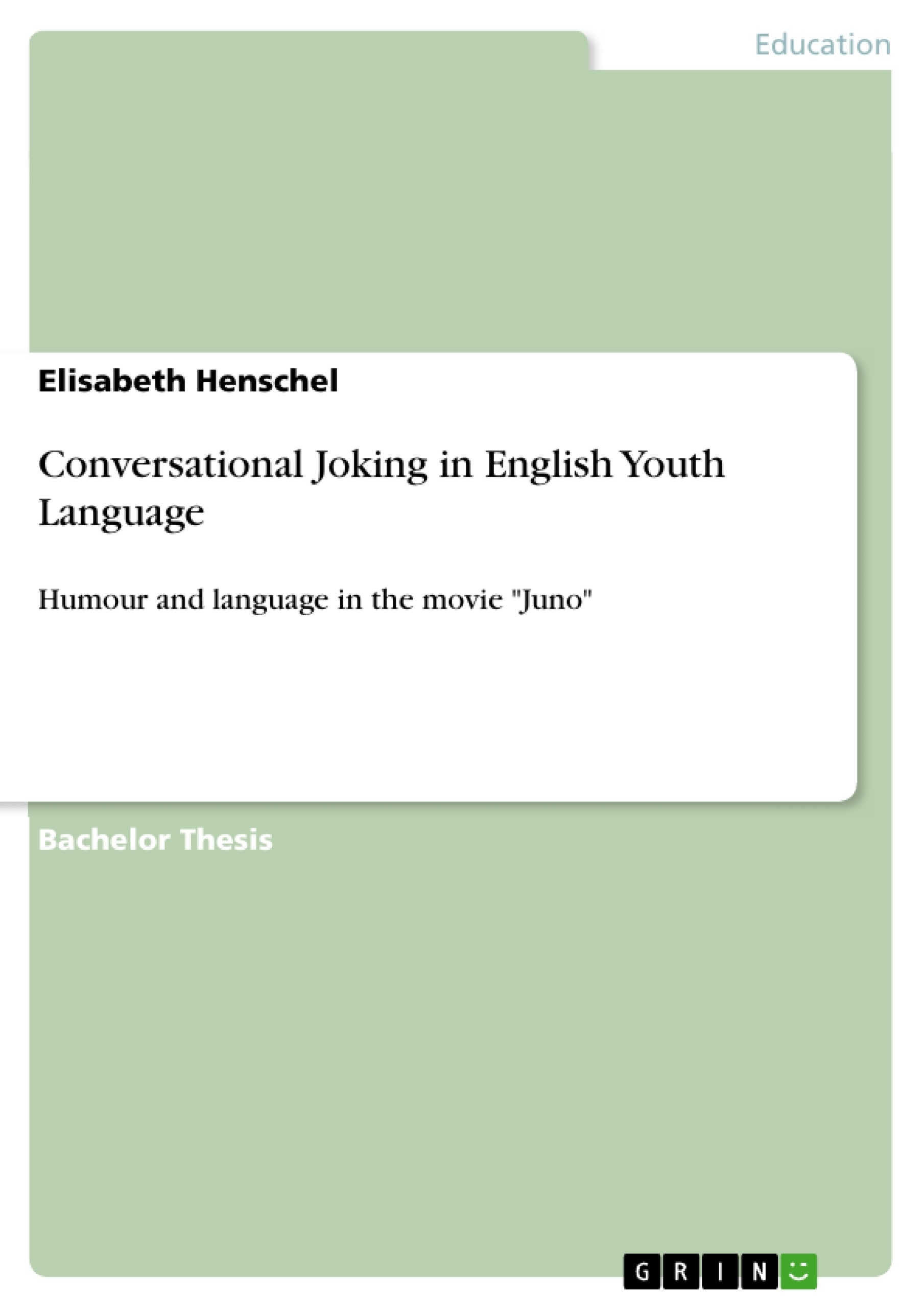Today the youth and its culture attracts more attention than ever before. Via the internet, films, music or magazines it is possible to spread the feelings and tastes of a whole generation. Easily, a whole new culture can develope. So to say, modern media as a huge influence on the younger generation. Today, media is of major importance to younger people, because they use it as a communicative device, too.
The term “youth language” will be one aspect of this bachelor thesis. For the examination of the linguistic features it is necessary to look at the use of that language in conversations.
Moreover, the focus will be on a special field of youth language. Namely, the humour and in detail conversational jokes ocurring in youth language willl be analysed. The data are on the basis of the motion picture Juno, which thematises an uncomfortably youth issue from the viewpoint of a sixteen-year- old girl.
In the following, this work is concerned with the question, if youth language is used by the characters. Furthermore a speech analysis can reveal the linguistic features of the language of the adolescents. Moreover, the focus will be on how much humorous potential lies in their conversations.
Inhaltsverzeichnis (Table of Contents)
- Introduction
- How is Humour created?
- Humour theories
- Features of Humour
- Conversational joking
- Characteristic Features of Youth Language
- The Language and Humour in Juno
- Characteristics of a Comedy Movie
- About Juno
- Analysing Examples
- Conclusion
Zielsetzung und Themenschwerpunkte (Objectives and Key Themes)
This bachelor thesis examines the use of conversational joking in English youth language, focusing on the film Juno as a case study. It explores the linguistic features of adolescent language, including the potential for humour within their conversations, and the specific features of humour that are prevalent in youth language. The study aims to analyze the linguistic characteristics of youth language and its portrayal in media, questioning the authenticity of its representation.
- Linguistic features of youth language
- Conversational joking and humor in youth language
- The role of media in shaping the perception of youth language
- Analysis of humor theories in relation to film dialogue
- Authenticity of youth language representation in media
Zusammenfassung der Kapitel (Chapter Summaries)
- Introduction: This chapter sets the context by discussing the increasing influence of youth culture on modern media and its importance as a communicative tool for young people. It introduces the concept of "youth language" and its conversational forms, focusing on the analysis of humour and conversational jokes in youth language, using the film Juno as a case study.
- How is Humour created?: This chapter explores the concept of humour, analyzing various theories of humour including incongruity, superiority, and the role of surprise and punchlines. It discusses the importance of understanding humour in the context of film dialogue and the limitations of a single, universal theory of humour.
- Characteristic Features of Youth Language: This chapter focuses on the unique features of youth language, outlining its distinctive characteristics and how they influence communication and humor within the context of youth culture.
- The Language and Humour in Juno: This chapter delves into the specific language and humour found in the film Juno, analyzing the portrayal of youth language within the context of a comedy movie. It explores the characteristics of a comedy movie and examines how humour is used to create comedic effects.
Schlüsselwörter (Keywords)
This work focuses on the key terms and concepts of youth language, conversational joking, humour theories, linguistic features of adolescent language, media representation of youth culture, and the analysis of film dialogue as a means of understanding the use of language and humour within a specific cultural context.
- Quote paper
- Elisabeth Henschel (Author), 2009, Conversational Joking in English Youth Language, Munich, GRIN Verlag, https://www.grin.com/document/175341




